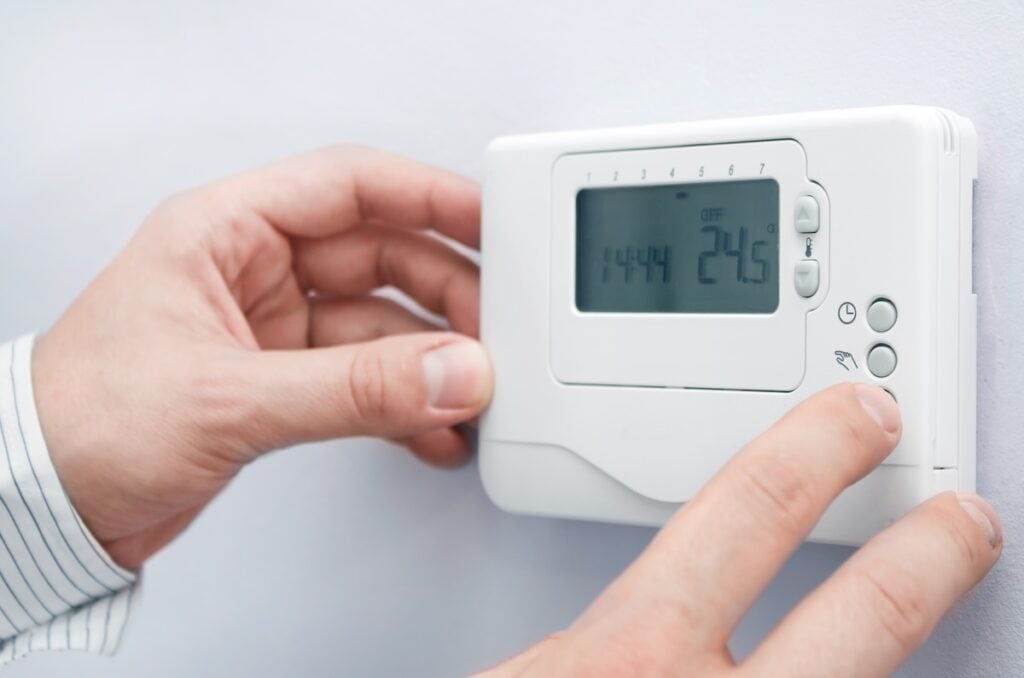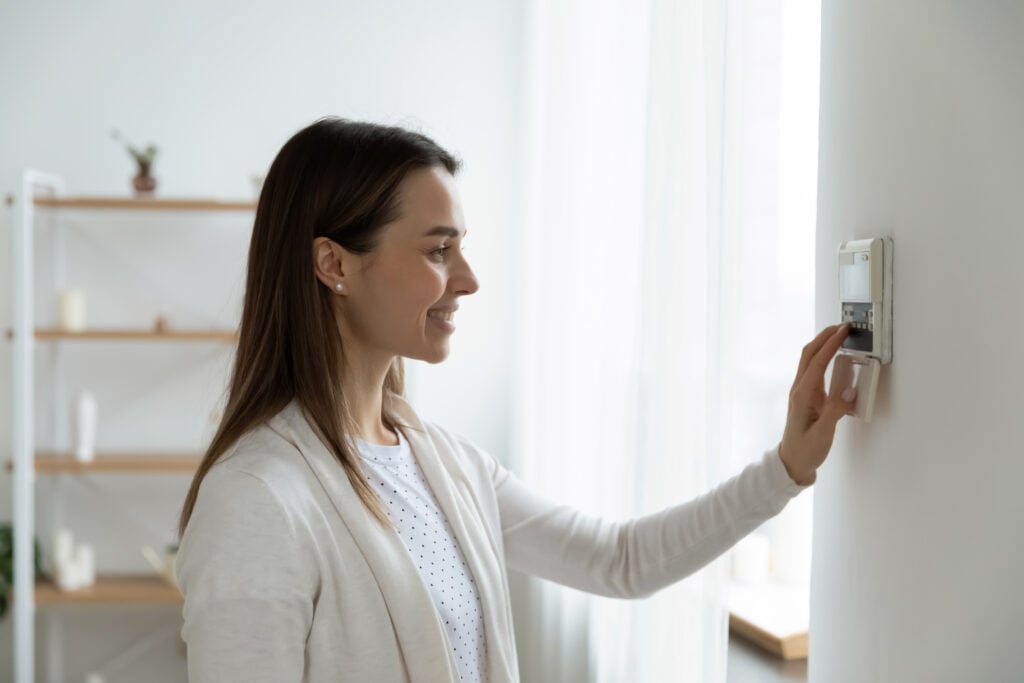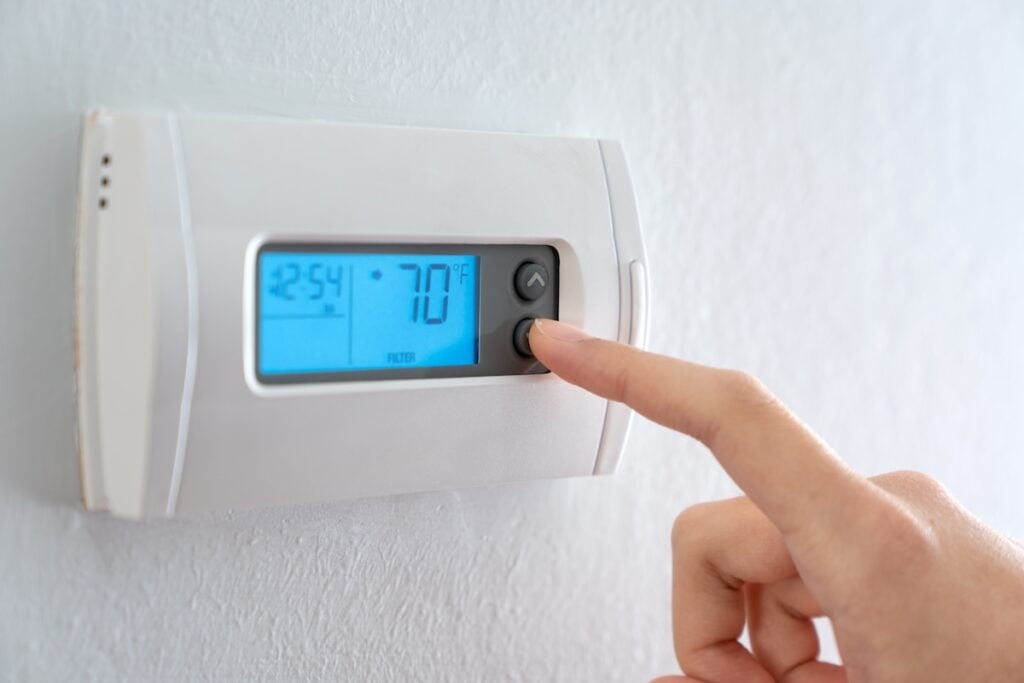


July 31, 2025
Thermostat Replacement Cost: 5 Common Issues + Fixes
Your thermostat controls your home’s comfort, but when it starts acting up, you might wonder about thermostat replacement cost and whether it’s time for an upgrade. Understanding the expenses involved—from basic models to smart thermostats—helps you make an informed decision that fits your budget and improves your home’s energy efficiency.
This comprehensive guide covers everything you need to know about thermostat replacement cost, including:
- Average costs for different thermostat types
- Labor and installation expenses
- Factors that affect pricing
- Common thermostat problems and solutions
- When to repair versus replace
- Money-saving tips and rebates
💵 Average Thermostat Replacement Cost

The thermostat installation replacement cost varies significantly based on the type of unit you choose and your home’s specific requirements. Here’s what you can expect to pay:
- Basic Programmable Thermostats: Cost $50–$150 and let you set different temperatures for various times of day, helping reduce energy costs while maintaining comfort.
- Smart Thermostats: Priced at $150–$500, models like Nest and Ecobee offer features like schedule learning, smartphone control, and smart home integration.
- Professional Installation Costs: Adds $100–$300, ensuring proper wiring, calibration, and HVAC compatibility.
Factors That Affect Thermostat Replacement Cost
Several factors influence the final price you’ll pay for thermostat replacement for your cooling system:
- Wiring Complexity: Older homes may need extra wiring work, especially if your new smart thermostat requires a C-wire for power, increasing labor costs.
- HVAC System Compatibility: Heat pumps, dual-fuel systems, or multi-stage HVAC units may require specialized thermostats, which can raise expenses.
- Location and Accessibility: Installing thermostats in tight spaces or areas needing wall repairs can make the process more time-consuming and costly.
- Additional Features: Options like humidity control, air quality monitoring, or smart home integration add to the cost but enhance comfort and convenience.
❗️ 5 Common Thermostat Issues That Require Replacement

A faulty thermostat can lead to inconsistent temperatures and higher energy bills, making it crucial to address issues quickly. Knowing when to replace your thermostat ensures your HVAC system runs efficiently and keeps your home comfortable.
1. Inaccurate Temperature Readings
When your thermostat displays incorrect temperatures, it can disrupt your comfort and lead to higher energy bills. If the thermostat can’t accurately read the temperature in your home, your HVAC system may overwork or underperform, causing discomfort and inefficiency. This issue often arises from aging sensors, dirt accumulation, or internal component failure. A temporary fix might involve recalibrating the thermostat or cleaning the sensors. However, if inaccurate readings persist despite these efforts, it typically signals the need for a replacement to ensure your HVAC system operates at peak performance.
2. Unresponsive Controls
If your thermostat doesn’t respond when you try to adjust the settings or if certain buttons no longer work, it’s a clear sign of trouble. This could be caused by internal electrical problems, damaged wiring, or even software glitches in smart thermostats. While restarting the thermostat or checking for loose connections might solve minor issues, unresponsive controls are often a sign of deeper malfunction. Because repairing these electrical problems is usually not cost-effective, replacing the thermostat with a newer, more reliable model is often the best course of action.
3. Short Cycling
Short cycling occurs when your HVAC system frequently turns on and off in quick cycles, preventing it from completing a full heating or cooling cycle. This is not only inefficient but also increases wear and tear on your HVAC equipment, potentially leading to costly repairs. In many cases, the thermostat is to blame, as it may be sending incorrect signals to the system due to faulty wiring, programming errors, or a malfunctioning sensor. Addressing short cycling quickly is essential to avoid higher energy bills and prolong the life of your HVAC system. If the issue persists, a thermostat replacement is likely necessary.
4. Blank Display Screen
A thermostat with a blank or dim screen often points to a power supply issue. This can be caused by something as simple as dead batteries, a tripped circuit breaker, or loose wiring. In some cases, resetting the thermostat or replacing the batteries can fix the issue. However, if the display continues to malfunction or the screen remains blank despite troubleshooting, it might indicate internal component failure. A blank display not only prevents you from adjusting settings but can also render your entire HVAC system inoperable. In such cases, replacing the thermostat is typically the best solution.
5. Inconsistent Temperature Control
If your home constantly feels too hot or too cold even when your thermostat is set correctly, the thermostat may no longer be able to regulate your HVAC system effectively. This inconsistency could be caused by aging components, sensor errors, or outdated technology that struggles to communicate with modern HVAC units. Inconsistent temperature control not only affects your comfort but also reduces the energy efficiency of your system, leading to higher utility bills. While recalibration or repositioning the thermostat might help temporarily, this problem is often a sign that an upgrade to a newer, more reliable thermostat is needed.
👉 Choosing the Right Thermostat for Your Home
Choosing the right thermostat helps you maintain a comfortable home while optimizing energy efficiency. The right choice can save you money on energy bills and reduce your environmental impact.
Assess Your Needs
Consider your daily schedule, comfort preferences, and technology comfort level when selecting a thermostat. Basic programmable models work well for consistent schedules, while smart thermostats excel for variable routines.
Consider Your HVAC System
Ensure your chosen thermostat is compatible with your heating and cooling equipment. Heat pumps, multi-stage systems, and dual-fuel setups may require specific thermostat types.
Think About Future Needs
If you plan to add smart home devices or want advanced features later, investing in a smart thermostat now may be more cost-effective than upgrading again.
🔎 Maximizing Your Thermostat Investment

Maximizing your thermostat investment ensures your home stays comfortable while saving on energy costs. A well-optimized thermostat can improve efficiency and reduce utility bills over time.
Regular Maintenance
Keep your thermostat clean and change batteries annually to ensure optimal performance and longevity.
Learn All Features
Take time to understand your new thermostat’s capabilities. Many homeowners don’t utilize energy-saving features that could reduce their utility bills.
Monitor Performance
Track your energy usage after installation to verify your new thermostat is delivering expected savings.
👨🔧 Trust Smock HVAC for Your Thermostat Replacement
When it comes to thermostat replacement or any of your air conditioning needs, trust the experts at Smock HVAC. With years of experience, a commitment to quality, and a customer-first approach, our team ensures you get the best solutions for your home’s comfort and efficiency.
We take the time to understand your needs and provide honest recommendations, so you can feel confident in your choice. Ready to upgrade your thermostat and improve your home’s comfort? Contact Smock HVAC today to schedule your consultation and experience the difference of working with a trusted team who puts your satisfaction first!


